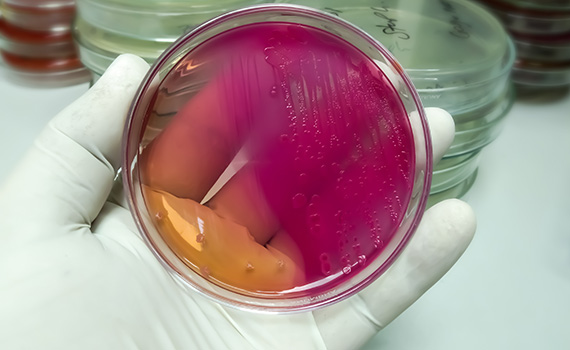E. coli becoming more common with rise in ‘no antibiotics ever’ programs
With the removal of antibiotics in the hatchery in “no antibiotics ever” (NAE) programs, the bacterium Escherichia coli is becoming more of a problem at many broiler complexes, Tim Cummings, DVM, technical service veterinarian for Zoetis, told Poultry Health Today.
E. coli is associated with first-week mortality, as well as lameness and/or culling of birds during the second half of grow-out. Colibacillosis can show up as airsacculitis, femoral head necrosis, bone infections and synovitis later in the field, he said.
The initial disease problems stemming from E. coli often come from the chick’s navel or respiratory and intestinal tracts and quickly become a secondary infection, the veterinarian said. Because it’s a bacterial infection, treatment with any type of antibiotic will result in the flock being removed from the NAE program.
Particularly in NAE programs, a quality egg pack is absolutely essential to minimizing chick contamination. The hatchery must be willing to undergo a revolution in looking at ways to address sanitation that gentamycin was helping to control. There are a myriad of areas to look into, such as making sure hatching trays are being properly washed and dried.
Controlling E. coli requires other good basic management, Cummings said. Start the birds right, brood them properly, don’t let litter get too wet, use proper ventilation and control ammonia. This requires attention to detail and some extra work, he said, but these are all chores that should be done routinely anyway.
A live E. coli vaccine should be considered when there are continuous problems, Cummings noted.
Editor’s note: This video interview, podcast and news article were developed independently by the editors of Poultry Health Today. They are presented here solely for their news value. The opinions and recommendations presented are not necessarily shared by the editors of Poultry Health Today or the interviewee’s employer.
Posted on August 31, 2018
 We’re glad you’re enjoying
We’re glad you’re enjoying










